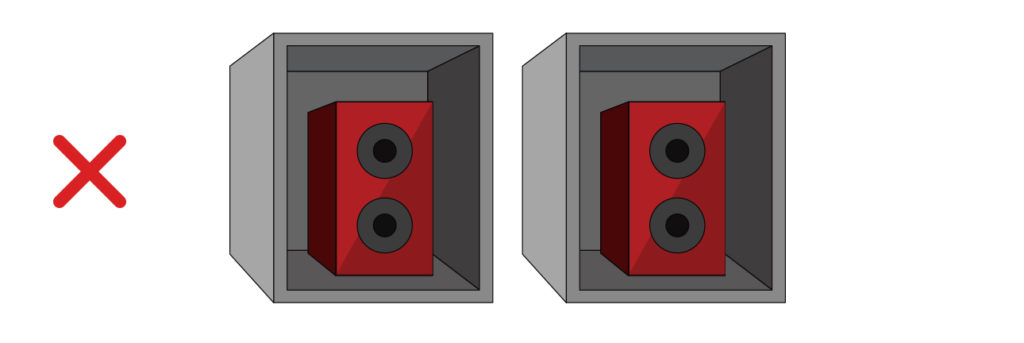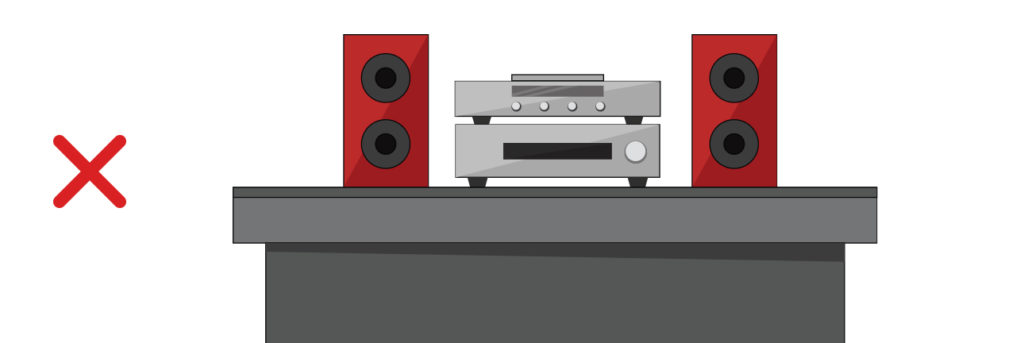If you have been following this blog, then you already know the remarkably detrimental effects that unwanted vibration can have on your sound system. Smeared imaging, timing errors, and musical distortions are only some of the negative side-effects that hifi enthusiasts live with when they don’t defend their components, loudspeakers, and audio racks from an incessant assault of errant vibrations. Many times, vibration goes unchecked because system owners aren’t willing to invest in the sometimes costly audio accessories designed to address this problem. However, there are a few small, easy adjustments that you can make to your system that will help to greatly reduce the effects of harmful vibrations, without having to spend a cent!
1. System Placement:
For aesthetic reasons or special constraints, you may want to hide your audio equipment, or shove it into the corner of a room. However, system placement can play a critical role in the amount of vibration that you are introducing into your system. Avoid placing your audio equipment in corners, behind speakers, or within the same space as household appliances like air conditioners, washing machines, etc. By simply positioning your audio rack in a relatively isolated but open location, you will drastically improve the audible performance of your sound system.

2. Steady Surfaces:
Obviously, the ideal place to rest your audio equipment would be on an audio rack, purpose-built to minimize vibrations. However, if that is not an option for your listening room or your budget, make sure that whatever surface you choose to hold your components is a sturdy surface that doesn’t shake, rattle, or move in any way. If it has the ability to be leveled, all the better!

3. Avoid Confined Spaces:
Resist the urge to neatly tuck your bookshelf speakers inside your actual bookshelves. Avoid placing your speakers or equipment in box-like, confined spaces that could cause resonance or vibrations, like shelving units or cabinets. These confined spaces act like echo-chambers, bouncing vibrations straight back into your speakers and impacting their performance.

4. Leave Space:
When placing your loudspeakers, make sure that they are minimally two to three feet away from your equipment (preferably resting on their own stands or dedicated surfaces). The sound emanating from you speakers is vibration in itself. When those vibrations hit your components, there is an audible impact. The more space you allow between your speakers and audio components, the more space you are introducing to allow for those vibrations to dissipate into the air, without doing any harm to your equipment.

While making these changes might not address ALL of the damaging vibration impacting your system’s performance, it is a great start! To learn more about different methods of vibration control, read our blog Three Ways to Address Vibration Control, or download our informative guide, The Importance of Vibration Control.

